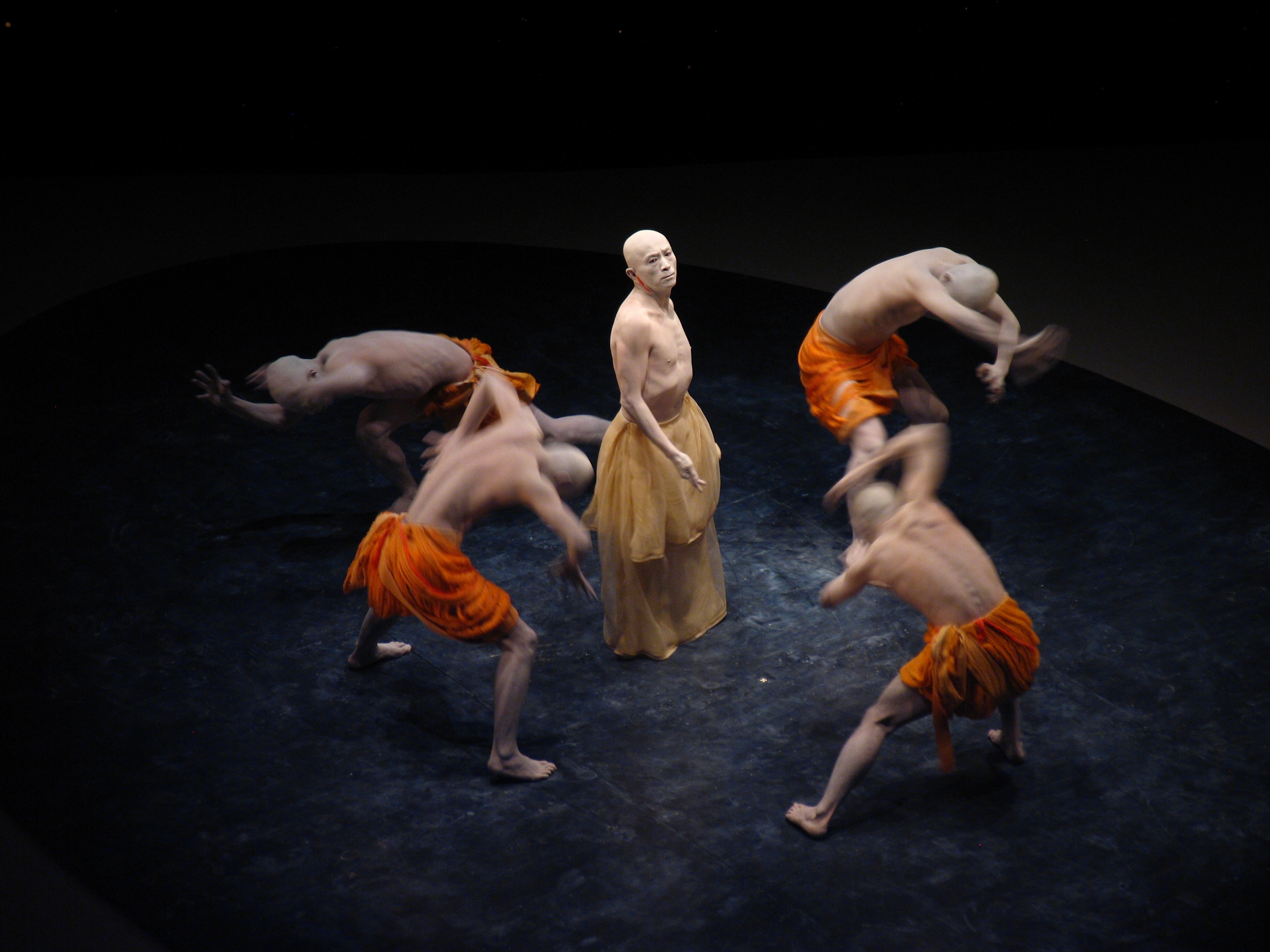Tobari: as if in an inexhaustible flux

Sankai Juku has blown me away at least three times now. The first was when I initially learned about them in my Japanese Performance class during my undergraduate degree. The second time was when I saw them perform their piece Kagemi at Place des Arts in Montreal in 2006, and most recently, they did it once more through their piece Tobari: As if in an Inexhaustible Flux.
What everyone first learns about Sankai Juku is that in September of 1985, they were, under the guidance of founder and choreographer Ushio Amagatsu, performing their piece Sholiba, which involved several dancers being suspended on ropes that were anchored on the top of a given building. The white-painted and nearly naked dancers would unfurl from a fetal position as they were lowered from the top of the building; they had done this piece many times, but this time something went terribly wrong. One of the dancers, Yoshiyuki Takada, plunged to his death as his rope turned out to have rotted, and as he hung in the air, it split and delivered him into the great unknown. Apparently, Takada didn't make a sound as he fell, leading the audience to wonder, for an instant, if they were witnessing art or tragedy.
This was the first thing I heard about Sankai Juku, and that story - the image of the silent, falling man - continues to haunt me.
With such a wound in the company's history, it's no wonder that Sankai Juku's choreographer seems able to take on the big themes - life, death, and the transition between - with ease, but he also does it with elegance. His work is as emotionally poignant as it is physically detailed, and he manages to balance easily the heaviness of his subject matter with an ethereal beauty that seems at times, weightless, verging on ineffable.
Through a series of nearly seamless transitions, Tobari , which means curtain or veil, is split into seven pieces. The first is called "From unlimited nothingness" and the last is called "Into unlimited nothingness", with what comes in between appearing as the transition of the human form into material existence and then back out of material substance, as though passing through a temporarily lifted veil. As all eight of the shaved headed dancers are completely painted white, and most of their costumes are fairly minimalist in style, the men could be anything. They could each be a baby, or an old man, an alien creature, or a metaphor; they are the canvas for our ideas, and as such are able to evoke interpretations that dwell deep in the worlds of emotion and spirituality, surpassing mere representation of a thing or a character.
The choreography itself is, somehow, sublime. Butoh is known for its slow speed, but it is really the detail with which Amagatsu choreographs that is so impressive. Through their slowness and their weighted butoh walk, these dancers have gravitas, but they also have the ability to evoke an entire universe with the flick of a wrist or the turn of a head. One of the aspects of the choreography that is so interesting in this piece, is the fact that the dancers, though they might dance in unison, do not actually interact with each other throughout the duration of the piece. There is a ritualistic synchronicity with which they seem to be dancing in parallel, but not really with one other. In this style there is a contemplative quality that suggests something akin to prayer, as though every man is engaged in his own reflection, his own communion with the beyond, and the dancers are so focused on this that they are only barely aware of one another, in spite of their ability to attend to the most minute details of timing and precision. This idea of collective individuality is appropriate; while the dancers do not touch at all throughout the piece, they manage to create a sense that, although they are in very atomic spaces, they still function as a whole, a single organism with a tremendous unison of energy.
During various parts of the piece, the back wall was illuminated as though it was a dark sky with a million stars scattered across it. Likewise the oval-shaped disk on the stage itself was lit in the same way, and together they seemed to represent the eternal unknown. Against this background, the dancers, with their disorienting, white bodies express the smallness of humankind against the chasms of time and space, while their strange facial expressions suggest, at times, the utter despair of standing on the edge of these chasms, and watching them, I could feel my heart being pierced by the tragic comparison of small, material humankind against all eternity.
It cannot go without mentioning that, while all of the dancers of Sankai Juku are tremendous, the solo that was performed by Amagatsu himself, was moving in the most delicate, aching way. This section was called "In an inexhaustible flux", and it was singularly exquisite. Amagatsu inhabits every inch of his body with grace, and he uses every inch with a rare expressiveness. He is spiritually luminous, and it is his solo that most invited me in to join these dancers in their trance-like contemplation of the unknown that appeared to exist in the vast, starry sky at the back of the stage.
Italian poet Salvatore Quasimodo wrote these lines:
"Everyone stands alone on the heart of the earth?transfixed by a sun ray:?and suddenly it is evening."
In Amagatsu's deeply beautiful piece I saw the sorrow of men and women who contemplate the great hereafter, and I saw the inevitability of falling into it. But I also saw the pure poetry of a choreographer who has seen the very darkness of sudden evening swallowing the sun, but crawled out of the emotional chasm and can now convey the magnificent, twisted beauty of the mystery of life in all its smallness and in all its grandeur.



